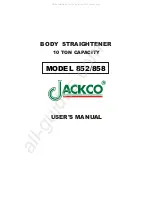
33
Maintenance
If an external leakage is observed:
1. Shut down the system as described above.
2. Disconnect the power cord from the power outlet.
3. Remove the spillage using the appropriate safety
precautions. In the event of leakage from a column, allow
all solvent vapor to dissipate before removing the column.
Do not wipe away any excess solvent from the column
surface as this can generate additional static charge.
4. If using the optional instrument tray, ensure that the tray
and the solvent detector (including the space underneath
the detector) are cleaned and wiped dry. To remove the
solvent detector, unsnap the detector cable from the two
tube clips, open the hatch holding the solvent detector in
position, and pull the detector sideways (see Figure 63).
Figure 63
B
B
AA
AA
.
Instrument tray with a solvent detector. A = tube clips holding
the detector cable and B = the solvent detector hatch open.
5. If using the optional secondary solvent containment:
a. Ensure that the secondary solvent containment and
solvent detector (including the space underneath the
detector) are cleaned and wiped dry. To remove the
solvent detector, remove the cable locking plate, open the
hatch holding the solvent detector in position, and pull
the detector sideways (see Figure 64). If you are using the
solvent containment on the top of the system and need
to remove it to clean it, unscrew (Torx 20) and remove
(slide out) the two brackets at the rear of the system
(see Figure 65). Reassemble by reversing the procedure.
Figure 64
B
B
AA
.
Secondary solvent containment with a solvent detector.
A = cable locking plate and B = the solvent detector hatch open.
b. If using the secondary solvent containment on the top
of the system, ensure that the drain tube is not damaged
and is properly connected to the drain port at the rear;
see A in Figure 65. The other end shall be inserted into
a waste reservoir.
Figure 65
A
A
.
The two screws holding the brackets for the optional secondary
solvent containment (circled) and the drain port (A).
6. Check all external tubes and connections for leaks. Use
caution when finger tightening fittings to prevent stripped
threads or crushed ferrules. Replace damaged tubing.
7. Once you have located and resolved the leakage, reconnect
the system to power and turn on the system.
8. Check all tubes and connections for leaks using the flush
function; see page 20. Flush with water or another
suitable solvent.
9. If the problem persists:
a. End the flush by pressing
Stop
.
b. Shut down the system and disconnect the power cord
from the power outlet.
c. Contact Biotage 1-Point Support.
Internal Leakage
Internal leakage, due to e.g. worn pump seals or tube fittings,
is drained through drain ports underneath the system.
If an internal leakage is observed:
1. Shut down the system as described in “Shut Down the
System at Leakage” on page 32.
2. Disconnect the power cord from the power outlet.
3. Ensure that the leakage is not external; see “External
4. Contact Biotage 1-Point Support.
Содержание Selekt Enkel
Страница 1: ...Biotage Selekt Enkel User Manual...
Страница 42: ...40 Biotage Selekt Enkel User Manual Biotage 2022 Notes Notes...
Страница 43: ......










































